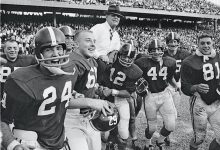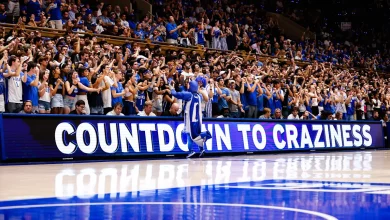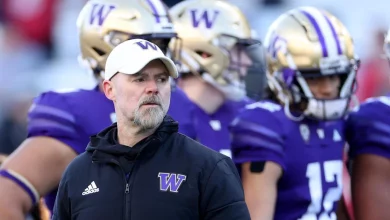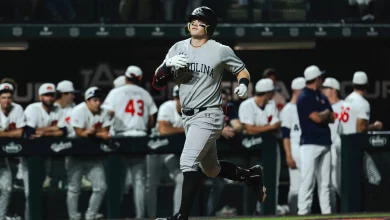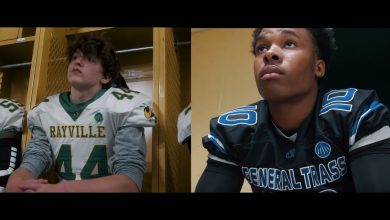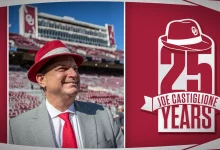Mike Vrabel and Urban Meyer shared a hilarious behind-the-scenes Ohio State story, revealing team antics that kept the Buckeyes loose.
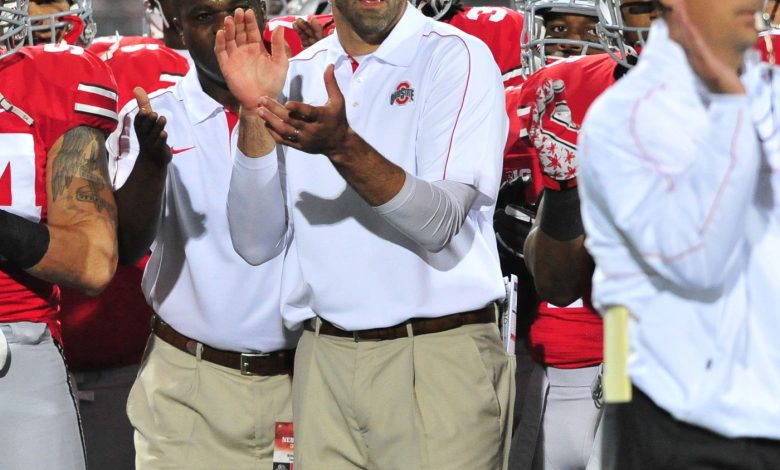
The mystique of Ohio State football isn’t just forged under the bright lights of packed stadiums or the pressure of Big Ten title chases. It’s also built behind the scenes—where championship cultures are cultivated through camaraderie, candid moments, and a healthy dose of locker room antics. Recently, former Buckeyes head coach Urban Meyer and former assistant coach Mike Vrabel lifted the curtain on one such moment, delivering a hilarious story that perfectly captured the spirit of the early 2010s Ohio State teams.
Appearing together on a podcast dedicated to stories from the road, Meyer and Vrabel—two towering figures in Buckeye lore—dove into a memory that had both of them laughing before they could even finish the tale. The story revolved around Vrabel’s time on Meyer’s inaugural Ohio State staff in 2012, during the rebuild that followed the Jim Tressel fallout and NCAA sanctions. What followed was a glimpse into how a tightly wound football operation stayed loose, grounded, and bonded through moments of unexpected hilarity.
A Tense Start to a New Era
To fully appreciate the story, one must first understand the backdrop. Meyer had just taken over a program reeling from the fallout of the tattoo scandal and the resignation of a beloved coach. Entering with a no-nonsense reputation and two national titles at Florida, Meyer was tasked with restoring order and reigniting pride. He brought in a mix of trusted lieutenants and fiery personalities—including Vrabel, who had returned to his alma mater with an NFL pedigree and a linebacker’s bravado.
“There was a seriousness about everything that first spring,” Meyer recalled. “We were trying to set a tone. Everything was ‘go, go, go’—very high intensity. But Mike, man… Mike was the wild card.”
Vrabel, known for his fiery competitive streak and sharp wit, quickly became a favorite among players for his authenticity. He coached hard, joked harder, and made it his mission to ensure the locker room wasn’t consumed by pressure.
The Infamous ‘Hot Tub Incident’
As Meyer and Vrabel reminisced, the former Tennessee Titans head coach couldn’t help but bring up “the hot tub incident”—a moment that would live in Buckeye infamy.
“It was after a long spring practice,” Vrabel began. “Guys are exhausted, coaches are tense. Urban’s pacing like he’s about to call a blitz on a staff meeting. So I decide, ‘Let’s loosen this up a bit.’”
Vrabel, who had no qualms about blending humor with coaching, made a bold entrance into the team facility’s recovery area—wearing nothing but a strategically positioned towel and a football helmet. With a whistle in hand, he marched into the hot tub area where several players, including future NFL stars, were soaking in ice baths.
“Mike walks in like it’s a scene from Gladiator,” Meyer laughed. “He blows the whistle and yells, ‘No loafing in my tub!’”
Players burst into laughter. Vrabel strutted around the room pretending to inspect their form, barking fake orders in exaggerated football coach lingo. “I’m checking pad level,” Vrabel joked. “Even in a hot tub, fundamentals matter.”
What made it funnier, according to Meyer, was that Vrabel had coordinated it with the team’s head athletic trainer, who played along by calling out a few fake violations of “tub protocol.” The recovery area, normally quiet and routine, became a mini comedy club for about ten minutes.
Breaking Tension with Comedy
The story didn’t just amuse players—it broke the tension Meyer himself had been carrying for weeks. That moment, he admitted, showed him the value of balance within a coaching staff.
“Mike had this incredible ability to say, ‘We’re going to work hard, but we’re also going to be human,’” Meyer said. “It reminded me that culture isn’t just built through discipline—it’s also built through trust, relatability, and laughter.”
Players echoed that sentiment at the time and in years since. Former linebacker Ryan Shazier, when later asked about Vrabel’s impact, said, “Coach V was intense, but he’d also clown with us. He treated us like men, not just robots. That made us want to play harder for him.”
In a game defined by pressure and perfection, those moments of levity can become rallying points. The “hot tub inspection” became a recurring joke throughout the offseason. Players started wearing helmet towels into meetings, mimicking Vrabel’s act. One assistant coach even made a laminated “Tub Compliance Chart,” complete with fictional violations like “subpar water displacement” and “unacceptable cannonball form.”
Meyer’s Evolving Leadership Philosophy
Meyer has long been known for his meticulous nature. But as his tenure at Ohio State progressed, he admitted that the lesson Vrabel helped teach him—how humor and human connection could enhance performance—became central to his leadership philosophy.
“I used to think it had to be all business, all the time,” Meyer said. “But that year, I saw how our best players responded to a coach who could coach them hard and still make them laugh.”
Vrabel would go on to further coaching success, including a head coaching stint in the NFL where similar stories surfaced about his unique methods of motivation. At Ohio State, though, it was clear he left a lasting imprint not just on game plans, but on team chemistry.
“That’s what people forget,” Vrabel added. “You can have the best athletes in the world, but if they don’t trust you, if they don’t like being around each other, you won’t win much. That team? We won because we had that bond.”
Ohio State went 12-0 in 2012, despite being ineligible for postseason play. It was a season fueled by unity, resilience, and—as Meyer and Vrabel reminded everyone—moments of joyful absurdity that made the grind worthwhile.
The Legacy of Locker Room Culture
Today, as former players become coaches and new generations of Buckeyes come through the Woody Hayes Athletic Center, the tale of the “Hot Tub Commander” lives on as part of program folklore. It serves as a reminder that behind the pageantry of college football lies a beating heart of shared struggle, spontaneous joy, and leaders who know when to blow a whistle—and when to blow off steam.
“There’s a time for yelling,” Vrabel said with a grin. “And there’s a time for walking into the hot tub like you’re Patton preparing for war.”
For Urban Meyer, it’s one of many stories he could share—but one that captures what made those early days at Ohio State so transformative.
“It was the start of something special,” Meyer said. “We had no bowl, no championship to chase. Just each other. And a towel-wearing lunatic who kept us all sane.”
Final Whistle
In a sport where stories are often measured in wins and losses, sometimes the most enduring tales are the ones that happen far from the field—where helmets become props, coaches become characters, and the game reminds us that it’s okay to laugh along the way.
So the next time someone asks how culture is built at a place like Ohio State, don’t just point to trophies or training regimens. Point to the hot tub. And to the linebacker in the towel who helped remind everyone that joy, too, is part of the process.


